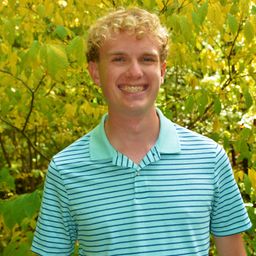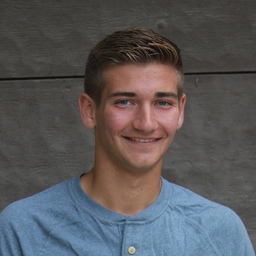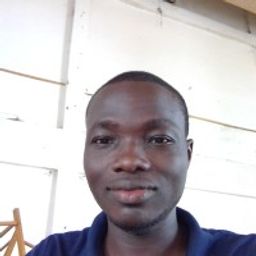How Many Balls Must She Select Minimum to Be Sure of Having at Least Three Blue Balls
Problem 1
Show that in any set of six classes, each meeting regularly once a week on a particular day of the week, there must be two that meet on the same day, assuming that no classes are held on weekends.

Clarissa N.
Numerade Educator
Problem 2
Show that if there are 30 students in a class, then at least two have last names that begin with the same letter.

Serena H.
Numerade Educator
Problem 3
A drawer contains a dozen brown socks and a dozen black socks, all unmatched. A man takes socks out at random in the dark.
a) How many socks must he take out to be sure that he has at least two socks of the same color?
b) How many socks must he take out to be sure that he has at least two black socks?

Clarissa N.
Numerade Educator
Problem 4
A bowl contains 10 red balls and 10 blue balls. A woman selects balls at random without looking at them.
a) How many balls must she select to be sure of having at least three balls of the same color?
b) How many balls must she select to be sure of having at least three blue balls?

Serena H.
Numerade Educator
Problem 5
Undergraduate students at a college belong to one of four groups depending on the year in which they are expected to graduate. Each student must choose one of 21 different majors. How many students are needed to assure that there are two students expected to graduate in the same year who have the same major?

Clarissa N.
Numerade Educator
Problem 6
There are six professors teaching the introductory discrete mathematics class at a university. The same final exam is given by all six professors. If the lowest possible score on the final is 0 and the highest possible score is 100, how many students must there be to guarantee that there are two students with the same professor who earned the same final examination score?

Serena H.
Numerade Educator
Problem 7
Show that among any group of five (not necessarily consecutive) integers, there are two with the same remainder when divided by 4.

Clarissa N.
Numerade Educator
Problem 8
Let $d$ be a positive integer. Show that among any group of $d+1$ (not necessarily consecutive) integers there are two with exactly the same remainder when they are divided by $d .$

Serena H.
Numerade Educator
Problem 9
Let $n$ be a positive integer. Show that in any set of $n$ consecutive integers there is exactly one divisible by $n .$

Clarissa N.
Numerade Educator
Problem 10
Show that if $f$ is a function from $S$ to $T,$ where $S$ and $T$ are finite sets with $|S|>|T|,$ then there are elements $s_{1}$ and $s_{2}$ in $S$ such that $f\left(s_{1}\right)=f\left(s_{2}\right),$ or in other words, $f$ is not one-to-one.

Adam D.
Numerade Educator
Problem 11
What is the minimum number of students, each of whom comes from one of the 50 states, who must be enrolled in a university to guarantee that there are at least 100 who come from the same state?

Clarissa N.
Numerade Educator
Problem 12
Let $\left(x_{i}, y_{i}\right), i=1,2,3,4,5,$ be a set of five distinct points with integer coordinates in the $x y$ plane. Show that the midpoint of the line joining at least one pair of these points has integer coordinates.

Dushyant B.
Numerade Educator
Problem 13
Let $\left(x_{i}, y_{i}, z_{i}\right), i=1,2,3,4,5,6,7,8,9,$ be a set of nine distinct points with integer coordinates in $x y z$ space. Show that the midpoint of at least one pair of these points has integer coordinates.

Clarissa N.
Numerade Educator
Problem 14
How many ordered pairs of integers $(a, b)$ are needed to guarantee that there are two ordered pairs
$\left(a_{1}, b_{1}\right)$ and $\left(a_{2}, b_{2}\right)$ such that $a_{1} \bmod 5=a_{2} \bmod 5$ and $b_{1} \bmod 5=b_{2} \bmod 5 ?$

Adam D.
Numerade Educator
Problem 15
a) Show that if five integers are selected from the first eight positive integers, there must be a pair of these integers with a sum equal to 9.
b) Is the conclusion in part (a) true if four integers are selected rather than five?

Clarissa N.
Numerade Educator
Problem 16
a) Show that if seven integers are selected from the first 10 positive integers, there must be at least two pairs of these integers with the sum 11.
b) Is the conclusion in part (a) true if six integers are selected rather than seven?

Dushyant B.
Numerade Educator
Problem 17
How many numbers must be selected from the set $\{1,2,3,4,5,6\}$ to guarantee that at least one pair of these numbers add up to 7$?$

Clarissa N.
Numerade Educator
Problem 18
How many numbers must be selected from the set $\{1,3,5,7,9,11,13,15\}$ to guarantee that at least one pair of these numbers add up to 16$?$

Dushyant B.
Numerade Educator
Problem 19
A company stores products in a warehouse. Storage bins in this warehouse are specified by their aisle, location in the aisle, and shelf. There are 50 aisles, 85 horizontal locations in each aisle, and 5 shelves throughout the warehouse. What is the least number of products the company can have so that at least two products must be stored in the same bin?

Clarissa N.
Numerade Educator
Problem 20
Suppose that there are nine students in a discrete mathematics class at a small college.
a) Show that the class must have at least five male students or at least five female students.
b) Show that the class must have at least three male students or at least seven female students.

Carson M.
Numerade Educator
Problem 21
Suppose that every student in a discrete mathematics class of 25 students is a freshman, a sophomore, or a junior.
a) Show that there are at least nine freshmen, at least nine sophomores, or at least nine juniors in the class.
b) Show that there are either at least three freshmen, at least 19 sophomores, or at least five juniors in the
class.

Clarissa N.
Numerade Educator
Problem 22
Find an increasing subsequence of maximal length and a decreasing subsequence of maximal length in the sequence 22, 5, 7, 2, 23, 10, 15, 21, 3, 17.

Willis J.
Numerade Educator
Problem 23
Construct a sequence of 16 positive integers that has no increasing or decreasing subsequence of five terms.

Clarissa N.
Numerade Educator
Problem 24
Show that if there are 101 people of different heights standing in a line, it is possible to find 11 people in the order they are standing in the line with heights that are either increasing or decreasing.
Drake E.
Numerade Educator
Problem 25
Show that whenever 25 girls and 25 boys are seated around a circular table there is always a person both of whose neighbors are boys.

Clarissa N.
Numerade Educator
Problem 26
Suppose that 21 girls and 21 boys enter a mathematics competition. Furthermore, suppose that each entrant solves at most six questions, and for every boy-girl pair, there is at least one question that they both solved. Show that there is a question that was solved by at least three girls and at least three boys.

Carson M.
Numerade Educator

Problem 27
Describe an algorithm in pseudocode for producing the largest increasing or decreasing subsequence of a sequence of distinct integers.
Problem 28
Show that in a group of five people (where any two people are either friends or enemies), there are not necessarily three mutual friends or three mutual enemies.

Carson M.
Numerade Educator
Problem 29
Show that in a group of 10 people (where any two people are either friends or enemies), there are either three mutual friends or four mutual enemies, and there are either three mutual enemies or four mutual friends.

Clarissa N.
Numerade Educator

Problem 30
Use Exercise 29 to show that among any group of 20 people (where any two people are either friends or enemies), there are either four mutual friends or four mutual enemies.
Problem 31
Show that if $n$ is an integer with $n \geq 2,$ then the Ramsey number $R(2, n)$ equals $n$ . (Recall that Ramsey numbers were discussed after Example 13 in Section $6.2 . )$

Clarissa N.
Numerade Educator

Problem 32
Show that if $m$ and $n$ are integers with $m \geq 2$ and $n \geq 2$ , then the Ramsey numbers $R(m, n)$ and $R(n, m)$ are equal. (Recall that Ramsey numbers were discussed after Example 13 in Section $6.2 .$ )
Problem 33
Show that there are at least six people in California (population: 39 million) with the same three initials who were born on the same day of the year (but not necessarily in the same year). Assume that everyone has three initials.

Clarissa N.
Numerade Educator
Problem 34
Show that if there are 100,000,000 wage earners in the United States who earn less than 1,000,000 dollars (but at least a penny), then there are two who earned exactly the same amount of money, to the penny, last year.

Carson M.
Numerade Educator
Problem 35
In the 17th century, there were more than 800,000 inhabitants of Paris. At the time, it was believed that no one had more than 200,000 hairs on their head. Assuming these numbers are correct and that everyone has at least one hair on their head (that is, no one is completely bald), use the pigeonhole principle to show, as the French writer Pierre Nicole did, that there had to be two Parisians with the same number of hairs on their heads. Then use the generalized pigeonhole principle to show that there had to be at least five Parisians at that time with the same number of hairs on their heads.

Clarissa N.
Numerade Educator
Problem 36
Assuming that no one has more than 1,000,000 hairs on their head and that the population of New York City was 8,537,673 in 2016, show there had to be at least nine people in New York City in 2016 with the same number of hairs on their heads.

Carson M.
Numerade Educator
Problem 37
There are 38 different time periods during which classes at a university can be scheduled. If there are 677 different classes, how many different rooms will be needed?

Clarissa N.
Numerade Educator
Problem 38
A computer network consists of six computers. Each computer is directly connected to at least one of the other computers. Show that there are at least two computers in the network that are directly connected to the same number of other computers.

Carson M.
Numerade Educator
Problem 39
A computer network consists of six computers. Each computer is directly connected to zero or more of the other computers. Show that there are at least two computers in the network that are directly connected to the same number of other computers. [Hint: It is impossible to have a computer linked to none of the others and a computer linked to all the others.]

Clarissa N.
Numerade Educator
Problem 40
Find the least number of cables required to connect eight computers to four printers to guarantee that for every choice of four of the eight computers, these four computers can directly access four different printers. Justify your answer.

Carson M.
Numerade Educator
Problem 41
Find the least number of cables required to connect 100 computers to 20 printers to guarantee that every subset of 20 computers can directly access 20 different printers. (Here, the assumptions about cables and computers are the same as in Example 9.) Justify your answer.

Clarissa N.
Numerade Educator
Problem 42
Prove that at a party where there are at least two people, there are two people who know the same number of other people there.

Carson M.
Numerade Educator
Problem 43
An arm wrestler is the champion for a period of 75 hours. (Here, by an hour, we mean a period starting from an exact hour, such as 1 P.M., until the next hour.) The arm wrestler had at least one match an hour, but no more than 125 total matches. Show that there is a period of consecutive hours during which the arm wrestler had exactly 24 matches.

Clarissa N.
Numerade Educator

Problem 44
Is the statement in Exercise 43 true if 24 is replaced by
$\begin{array}{llll}{\text { a) } 2 ?} & {\text { b) } 23 ?} & {\text { c) } 25 ?} & {\text { d) } 30 ?}\end{array}$
Problem 45
Show that if $f$ is a function from $S$ to $T,$ where $S$ and $T$ are nonempty finite sets and $m=\lceil|S| /|T|\rceil,$ then there are at least $m$ elements of $S$ mapped to the same value of $T .$ That is, show that there are distinct elements $s_{1}, s_{2}, \ldots, s_{m}$ of $S$ such that $f\left(s_{1}\right)=f\left(s_{2}\right)=\cdots=f\left(s_{m}\right)$

Clarissa N.
Numerade Educator
Problem 46
There are 51 houses on a street. Each house has an address between 1000 and 1099, inclusive. Show that at least two houses have addresses that are consecutive integers.

Carson M.
Numerade Educator
Problem 47
Let $x$ be an irrational number. Show that for some positive integer $j$ not exceeding the positive integer $n$ , the absolute value of the difference between $j x$ and the nearest integer to $j x$ is less than $1 / n .$

Clarissa N.
Numerade Educator
Problem 48
Let $n_{1}, n_{2}, \ldots, n_{t}$ be positive integers. Show that if $n_{1}+n_{2}+\cdots+n_{t}-t+1$ objects are placed into $t$ boxes, then for some $i, i=1,2, \ldots, t,$ the $i$ th box contains at least $n_{i}$ objects.

Carson M.
Numerade Educator
Problem 49
An alternative proof of Theorem 3 based on the generalized pigeonhole principle is outlined in this exercise. The notation used is the same as that used in the proof in the text.
a) Assume that $i_{k} \leq n$ for $k=1,2, \ldots, n^{2}+1 .$ Use the generalized pigeonhole principle to show that there are $n+1$ terms $a_{k_{1}}, a_{k_{2}}, \ldots, a_{k_{n+1}}$ with $i_{k_{1}}=i_{k_{2}}=\cdots=$ $i_{k_{n+1}},$ where $1 \leq k_{1}<k_{2}<\cdots<k_{n+1}$
b) Show that $a_{k_{j}}>a_{k_{j+1}}$ for $j=1,2, \ldots, n .[\text {Hint: Assume that }$
$a_{k_{j}} < a_{k_{j+1}}$, and show that this implies that $i_{k_{j}} > i_{k_{j+1}},$ which is a contradiction. $]$
c) Use parts $(a)$ and $(b)$ to show that if there is no increasing subsequence of length $n+1$ , then there must be a decreasing subsequence of this length.

Clarissa N.
Numerade Educator
christoffersocort1957.blogspot.com
Source: https://www.numerade.com/books/chapter/counting/?section=6807

0 Response to "How Many Balls Must She Select Minimum to Be Sure of Having at Least Three Blue Balls"
Postar um comentário